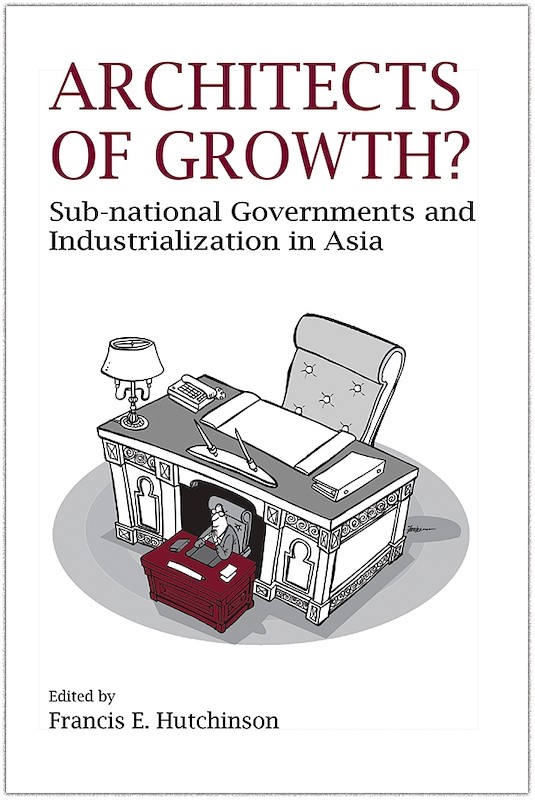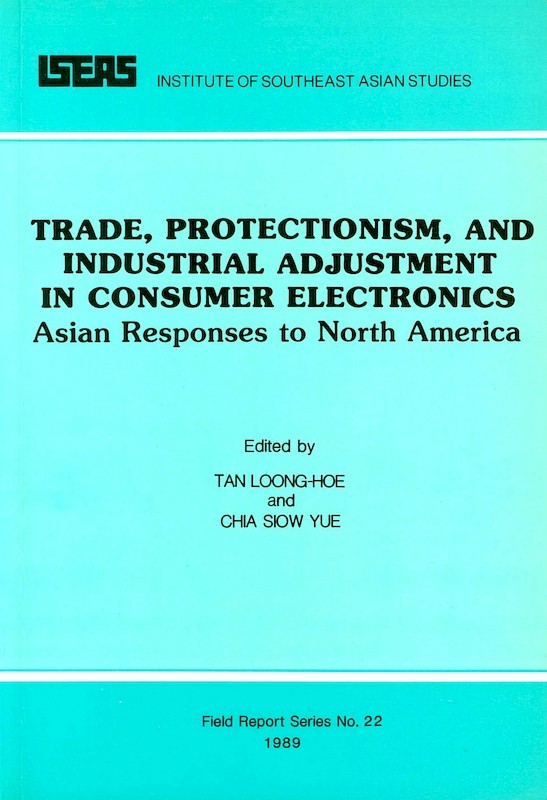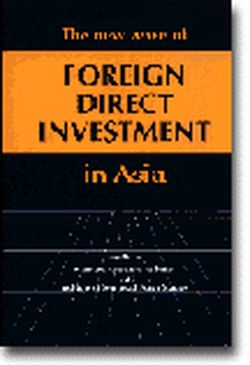Architects of Growth? Sub-national Governments and Industrialization in Asia

Reviews
Architects of growth addresses the role of sub-national governments in industrial development through an excellent theoretical overview of the roots of growth in developing countries and a well-structured research design that allows for comparison within and between cases. Hutchinson, in the introductory chapter to the volume, establishes a set of theoretical connections between the literatures on agglomeration, endogenous growth, comparative advantage and the regional politics of Asian countries. By framing regional governance in the context of industrial and technological development, Hutchinson provides a bridge between how we usually understand growth, as the outcome of a series of institutions, and the benefits (and costs) of institutions specific to regional agglomeration. ....
The ways in which these dynamics are explored through the book’s 10 case studies present an excellent example of comparative case study design. Nine out of 10 cases are Asian, but represent countries at quite different levels of development: from the industrialized economies of South Korea and Singapore through high middle-income ASEAN countries to China and India. There have also been significant differences cross-nationally as to the nature of regional governance; the assertive federalism of the Philippines and India contrasts with the activities of municipal and provincial governments in highly centralised states such as Vietnam and China. Yet the volume balances this variation with a structure that facilitates comparability: each chapter addresses the electronics industry, and presents the national context before moving to the sub-national case. In this way, we can see how national and sub-national factors interact within a common sectoral framework. This represents a real accomplishment that is difficult to achieve across chapters written by different authors and cases. ....
Together, the theoretical framework, the volume’s design and the substance of the case studies constitute an important advance that combines the increasing importance of looking below the national state with our need to understand the structures that support manufacturing in contemporary Asia. It is also significant that the volume as a whole is not a cheerleader for regionalism, but rather represents a sober judgement of the capabilities and significant constraints of regional governments in supporting industry.
It is this multifaceted role of the state that is analyzed by the collection of case studies in the book and given the fact that the role of sub-national entities to the literature on decentralisation, which so far has been preoccupied mainly with governance issues and not commodity producing ones.
The most refreshing aspect of the book is the central question that the editor raises, namely the extent to which sub-national governments design and implement policies to address needs regarding their industrial sectors. This central question is then followed by three sub-questions: (1) when do sub-national governments take on the role of architects?; (2) to what extent can they become the prime drivers of industrialisation; and (3) which of the strategies and policy measures that are available to them are productive, and under what conditions?
That said the book is stimulating and readable and a systematic appreciation of it can lead to the mergence of research on the welfare implications of incentive-induced industrialization at the sub-national level.
About the publication
Despite this increasingly challenging environment, there is little research on what sub-national governments can or should do to catalyze the development of their economies. Focussing on the electronics sector, this book draws together ten cases of promising states or provinces largely, but not exclusively, from Asia. These dynamic regions have managed to outcompete the primary economic and political centres of power in their countries and are negotiating their own entry into one of the most challenging and demanding sectors. In exploring the issues of agency, autonomy, and state-business relations at the sub-national level, this book aims to shed light on a vital, but overlooked topic.
Contents
-
Architects of Growth? Sub-national Governments and Industrialization in Asia
[Whole Publication, ISBN: 9789814414548], by Francis E Hutchinson, editor -
Preliminary pages
- I. INTRODUCTION AND INDUSTRY OVERVIEW
-
1. Introduction, by Francis E Hutchinson, author
-
2. Harnessing Asian Capabilities for Transforming the Electronics and IT Sectors: Recent Trends, Challenges and a Way Forward, by K J Joseph, author
- II. CASES FROM INDUSTRIALIZING SOUTHEAST ASIA
-
3. A Relational View on Regional Development: The Case of the Electronics Sector in Cebu, the Philippines, by Bram van Helvoirt, author
-
4. One Priority among Many? The State Government and Electronics Sector in Johor, Malaysia, by Francis E Hutchinson, author
-
5. Why Sub-national Governments in Thailand Are Not Creating Electronics Industry Clusters, by Danny Unger, Chandra-nuj Mahakanjana, authors
-
6. Regional Economic Development and Perspectives for the Electronics Sector in Vietnam: The Case of Da Nang, by Tran Ngoc Ca, author
- III. CASES FROM CHINA AND INDIA
-
7. The Evolution of Chengdu as an Inland Electronics "Base" in China and Its Local State, by Leo van Grunsven, Cassandra C. Wang, authors
-
8. The Electronics Industry in Tamil Nadu, India: A Regional Development Analysis, by P. Vigneswara Ilavarasan, Francis E Hutchinson, authors
- IV: CASES FROM INDUSTRIALIZED COUNTRIES
-
9. The Development of Singapore's Electronics Sector , by Toh Mun Heng, author
-
10. The Evolution of an Industrial Cluster and Its Policy Framework: The Case of Gumi City, Korea, by Sam Ock Park, Do Chai Chung, authors
-
11. The Case of the Electronics Sector in Kaohsiung Municipality, Taiwan, by Ting-Lin Lee, Thanut Tritasavit, authors
-
12. Sub-national Policy and Industrial Transformation in North Brabant, Netherlands, by Olaf Merk, author
- V. CONCLUSION
-
13. Sub-national Governments and Industrialzation: Some Conclusions, by Francis E Hutchinson, author
-
Index






